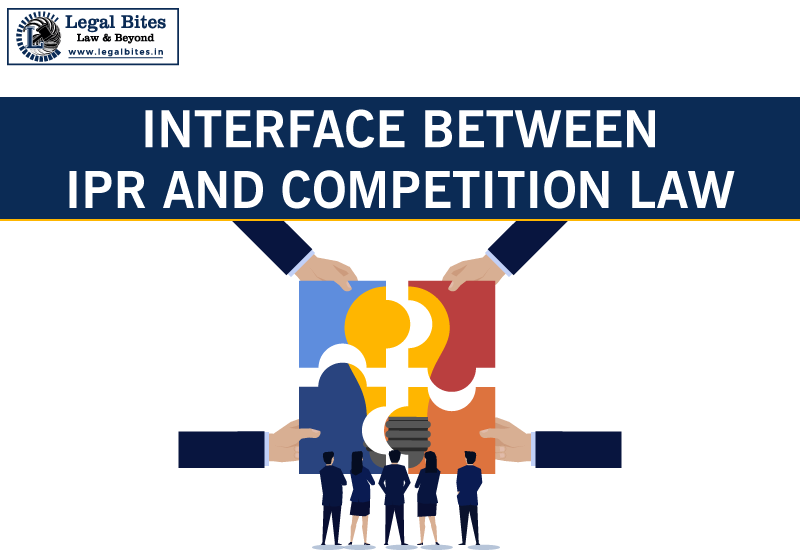Anti-Competitive Agreements: A Comparative Analysis of EU, US and UK
Anti-Competitive Agreements | Overview Introduction Competition Laws in the US Competition Law in the United Kingdom Competition Law in the European Union This article provides an insight into the anti-competitive agreements and how they are being regulated across the world by having a close look at three jurisdictions namely, US, UK and EU. Introduction People have resorted to… Read More »
;
This article provides an insight into the anti-competitive agreements and how they are being regulated across the world by having a close look at three jurisdictions, namely, US, UK and EU. Introduction People have resorted to the law for any sort of problem, pursuant to which legislatures worldwide have framed various laws for the well-being of their citizens, irrespective of whether they are natural citizens or juristic citizens. All the citizens are free to earn their livelihood with...
This article provides an insight into the anti-competitive agreements and how they are being regulated across the world by having a close look at three jurisdictions, namely, US, UK and EU.
Introduction
People have resorted to the law for any sort of problem, pursuant to which legislatures worldwide have framed various laws for the well-being of their citizens, irrespective of whether they are natural citizens or juristic citizens. All the citizens are free to earn their livelihood with the help of any lawful means.
Everyone has to face competition in the market to emerge as successful and efficient. But such a competition should be non-arbitrary, reasonable and fair in nature, leading to tremendous growth has been seen in the adoption of Competition Law during the past few years.
Various geographical regions all over the globe are seen to adopt the competition law, and they brought their economies under the provisions of the competition law. Gradually, market failures, abuse of dominance and other ill- practices in the form of any anti-competitive policy and so on were made subject to the competition laws and policies. It is realized that implementing the competition law is a need of the hour and not a privilege.[1]
The necessity was to regulate the competition in the market so that any company or any enterprise is not able to destroy any other person in the market to satisfy its own demands or reach the zenith of success. And eventually, to conduct and regulate competition in the market and to put a sword on all the anti-competitive practices in the market, a separate and new branch of law has come upfront, namely Competition Laws.
A separate branch of law has been drafted to put a halt to all activities focusing on the distortion of the market with the help of any anti-competitive practice. This law is also known as Antitrust legislation in the North American part of the world.[2]
I. Competition Laws in the US
Modern competition law finds its roots in the legislation of the United States, where the Sherman Act was brought in 1890 due to the rising concerns regarding the formation of trusts by the companies regulating in the American market. The US Congress had drafted three different legislatures: Sherman Act in 1890, the Clayton Act in 1914 and the Federal Trade Commission Act in 1914.
Though short and simple in nature, the very first legislation, i.e., the Sherman Act of 1890, has emerged as the most important one. The Antitrust law of America emerged as law and gave a socio-political picture to our society.[3]
The high concentration of competition amongst the American industries was diluted for a considerable period with the help of the political consensus reflected in the law.[4] The Antitrust law found its application for the protection of the core republican values with respect to free enterprise in America. It was designated as a “Charter of freedom” by its Supreme Court.
The fundamental principle that Sherman Act had thrown into the market was that it had put a bar on the formation of agreements by one or more competitors that restricted competition in the market. The Act also rejected the idea of monopolies in the market if such a company is not competing fairly in the market or has resorted to cheating. The Act had also provided heavy monetary fines or even jail for anyone who had violated its provisions.
The Sherman Act finds its roots in criminal law, and pursuant to this, it always requires proof of collusion of a higher degree. There are a lot of approaches prevalent in common law, from where the US developed the ‘rule of reason’.
In 1911, in the matter of Standard Oil Co. of New Jersey v. United States,[5] the Court held that any unreasonable or undue restraint is to be declared illegal. Hence, any agreements which are anti-competitive and pro-competitive in nature have to be weighed against each other to come to the point of the determination of competition, enhanced or reduced by those agreements.
The Clayton Act got passed in 1914. Business practices in America were very dynamic in nature. The Act protected customers in America from mergers or acquisitions that aimed at restricting competition in the market.
However, with the implementation of the Federal Trade Commission (FTC) Act in 1914, a completely new administrative body was set up to regulate all the unfair business practices in the market. Not only this, but the new Act had also empowered the Authorities to go with the investigation and to stop all the deceptive practices and unfair strategies of competition.[6]
Per se Approach
Some cases have been analyzed to determine the nature of restraint being so anti-competitive that such agreements have to be declared unlawful and illegal per se. In America, the rule of per se states that there are certain categories in antitrust laws relating to anti-competitive behaviour for which there is a presumption that they would be anti-competitive in nature and, thus, put an unreasonable restraint on trade.
There are many reasons why the Courts disapprove of the restraint put on per se violation of competition law. These reasons, for instance, comprise pernicious, manifestly competitive, naked or even those restraints that harm competition.
Normally, when the competitors come together to form horizontal agreements, it falls under the ambit of the illegal approach of per se. Some of these activities include tying arrangements, group boycotts, division of the geographic market, price-fixing and so on. The US Court, in the matter of Northern Pacific Railway Co v. United States[7] held that there exist certain types of practices or agreements which do not have any redeeming virtue but produce a pernicious effect on the competition in the market, fall under the ambit of unreasonable and illegal agreements.
II. Competition Law in the United Kingdom
The competition laws in the UK have seen a lot of changes in the past 15 years, and the current law was drafted in two different statutes, namely the Competition Act of 1998 and the Enterprise of 2002. The earlier system of regulating competition in the UK came out to be ineffective, confusing to handle and difficult to understand.
The Competition Authorities were not granted the power and sufficient resources for the enforcement of the law in an effective manner and politics deeply influenced the land. Hence, many of the practices dealing with anti-competitive business were undetected, unpunished and flourished.
The Competition Act of 1998 repealed many of the earlier legislation to provide the land of the UK with a more efficacious and efficient legal system. It led to the creation of new powers for the Office of Fair Trading (OFT), which helped the department to fight illegal and harmful anti-competitive practices such as abuse of market dominance and cartels, to name a few.
The Enterprise Act, which was passed in 2002, had been drafted with a focus on putting a halt to mergers and replacing the old provisions of the Old Fair Trading Act of 1973. The Act also brought the punishment of a maximum of 5 years for all those individuals who were responsible for serious cartel offences.[8]
The Act also empowered the system to disqualify all those individuals from acting as directors who have been found guilty of infringing any relevant competition law provision. Both laws provided a world-class system of Competition law.
III. Competition Law in the European Union
The Commission in the European Union was of the view that there should be an objective directed towards the welfare of consumers, and this can be seen even when key terms like restriction were put on competition,[9] improving the distribution or production of the goods along with the promotion of economic or technical progress.[10]
The Commission is also empowered to impose fines amounting to 10 per cent of the total turnover of the undertaking produced in the last financial year due to breaching competition law prohibiting restrictive agreements and cartels. National Authorities have been provided with similar kinds of powers.
Suppose a company willingly discloses the presence of a cartel to the Commission. In that case, such a company can benefit from either reduction in fine or complete immunity from the fine that is to be imposed under the leniency policy imposed by the Commission.
The applicant applying for such leniency must reveal the complete details about the cartel and provide full cooperation to the Commission during its investigation. Further, the third party that has to suffer a loss on account of actions that fall under Article 101 of the Competition Law of the EU is free to bring a suit of private damages before their respective national courts.
However, suppose a company enters into practice or an agreement that contributes to promoting economic or technical progress or improving the distribution or production of goods. In that case, consumers can also share the benefit of such an agreement. Such an agreement does not put such undertakings in a position where they can eliminate the competition in the market for that particular product or does not empower them to impose any restriction which cannot be done away with for achieving those objectives.
[1] Speech by Vinod Dhall at a workshop conducted on “Competition assessment analyses; Instrument for competition advocacy.”
[2] 7, Journal of European Competition Law & Practice, William H. Rooney et al., Getting Closer? The Application of Competition Laws to Regulatory Bodies in the USA and the EU, 2016, 267-273
[3] T. Sullivan, The Political Economy of the Sherman Act: The first one hundred years, 1st ed, 1991, p.3
[4] Barry J. Rodger and Angus MacCulloch, Law and Policy, 2nd ed. 2006, p.15.
[5] 221 U.S. 1 (1911)
[6] Csongor István Nagy, EU and US Competition Law (Taylor & Francis) (2016)
[7] 316 U.S. 346 (1942)
[8] Amended by the Robinson- Patman Act.
[9] Article 101 (1) of European Competition Law
[10] Article 101 (3) of European Competition Law





